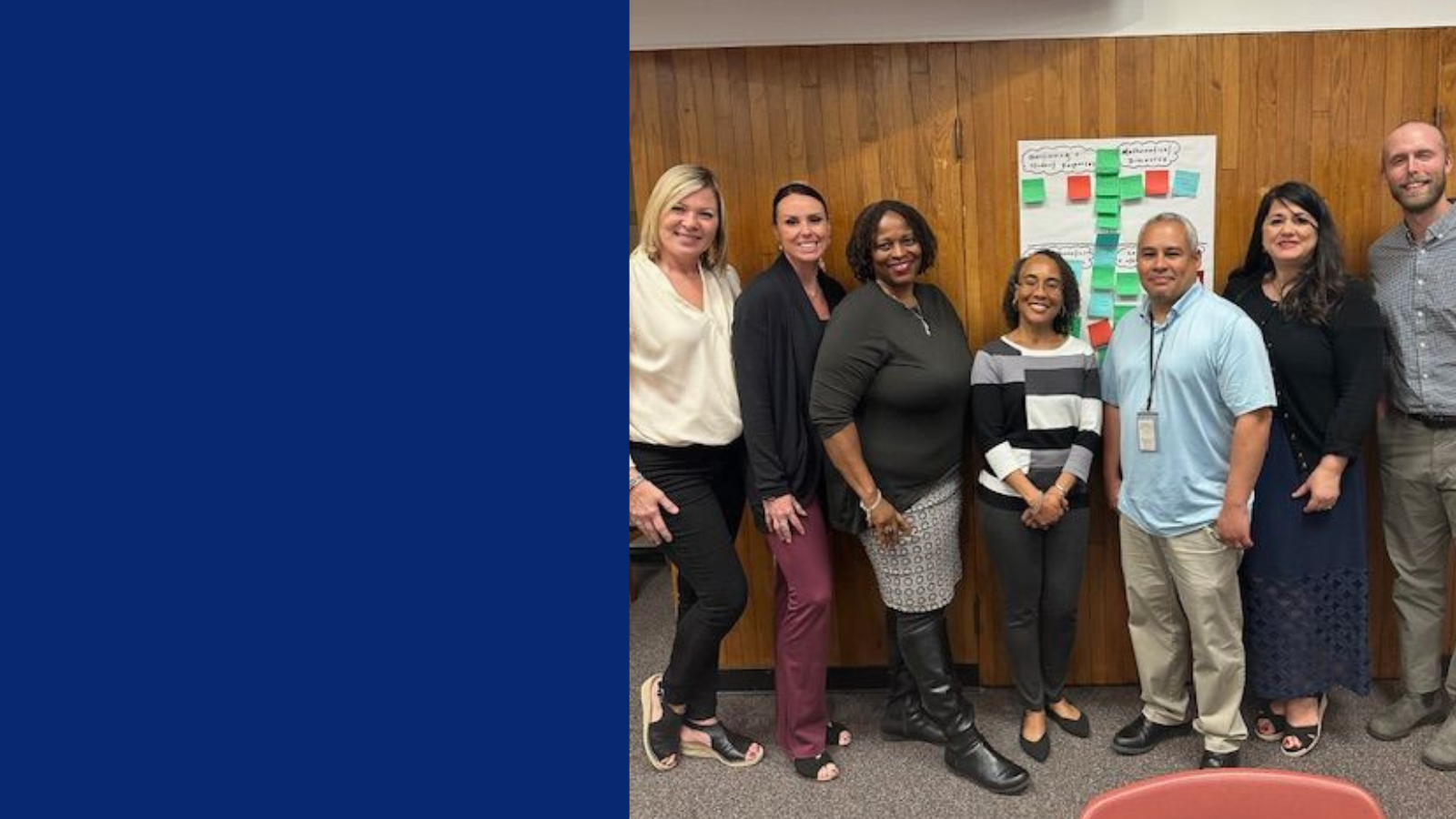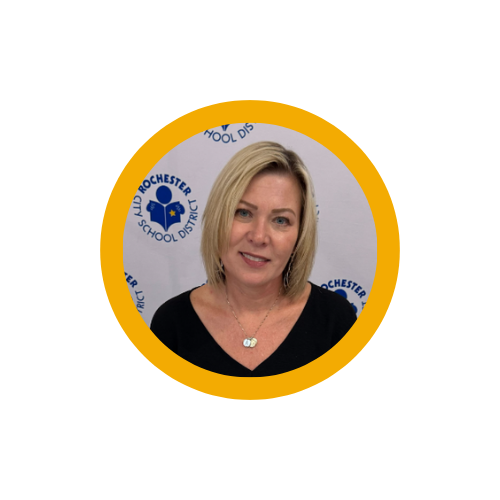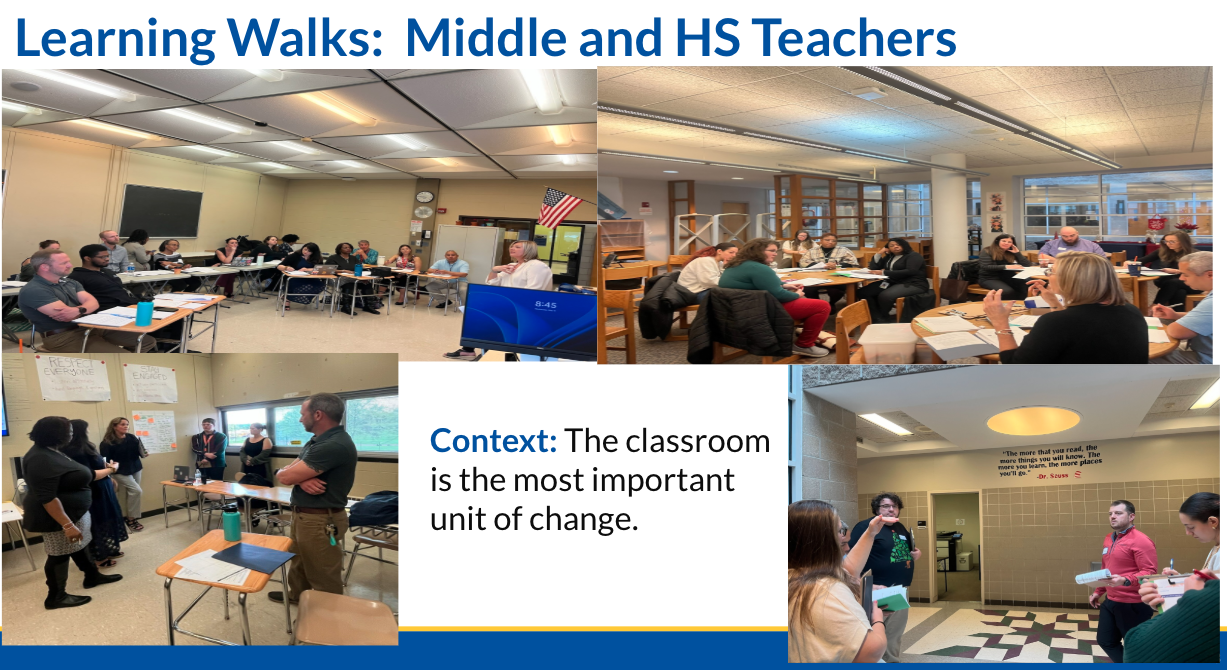Rochester’s Implementation Journey
Charting the Course Toward Equitable Math Instruction

Reimagining Secondary Math with Illustrative Mathematics
In the Rochester City School District (RCSD), the journey to transform mathematics instruction has been a story of vision, resilience, and systems-level change.
As Dr. Enkela Paco, Executive Director of Mathematics, described it, “Implementation is like a storm boat—messy, unpredictable, and often rocky. But we keep our eyes on the sun, which for us is excellent math instruction for all students.”
This metaphor captures the spirit of a district that has embraced complexity, persisted through constant changes and challenges, and remained steadfast in its commitment to equity and excellence.



The journey began in 2021 with seven out of 16 schools piloting Illustrative Mathematics (IM) for grades 7 and 8. Recognizing that curriculum alone is not enough, RCSD emphasized the importance of instructional quality and coherence across grade levels. The district’s vision was bold: to ensure that all students become independent, critical thinkers who use mathematics to understand and positively impact their communities. This vision was grounded in a set of core beliefs—referred to as “IDEAS”—that emphasized:
Building positive math identities
Focusing on conceptual learning
Creating safe, affirming spaces
Ensuring grade-level content for all
Providing scaffolds to meet diverse needs
Identity
Deep Understanding
Environments
Access
Supports
These principles guide instructional shifts toward problem-solving, modeling, and discourse.
“Without a vision, we go in circles. This gave us direction and allowed us to build other layers of support.”
To support this, the district adopted a phased approach to scaling IM, aligning it with New York State’s Next Generation Learning Standards. The implementation timeline included vertical and horizontal scaling, starting with expanding the implementation to grade 6 and Algebra 1 in 2023, with plans to expand multiple graduation pathways by 2025.
Anchoring in Data
The initial implementation focused heavily on teacher training. However, the team soon realized that training alone was insufficient. Classroom observations revealed that teachers often reverted to traditional instructional practices, and highlighted persistent challenges such as limited student-to-student discourse and a continued emphasis on memorization.
"Even though we modeled lessons in professional learning, it didn’t change teacher behavior. Change is hard, and it’s outside of their comfort zone."
The team also used heat maps to track time spent on various support activities, allowing them to identify patterns and adjust strategies. They discovered that while after-hours professional learning was well attended, it did not lead to measurable changes in classroom practice.



Root Cause and Structural Shifts
To better understand its capacity for change, the district administered the District Capacity Assessment (DCA), which provided a structured lens to evaluate readiness and pinpoint areas for growth. Key findings highlighted the need to improve leadership capacity, ensure fidelity of implementation, and enhance onboarding processes for new staff. These insights helped the district move beyond surface-level fixes and focus on building the infrastructure necessary for long-term success.
"We had to anchor ourselves in research and not get lost in our default mode. The capacity assessment helped us see where we were strong and where we needed to grow."
In response, the district adopted a methodical and scalable approach. They established a cascade of support in which central office teachers on assignment/coaches provided training to building-level coaches, who then supported classroom teachers. This model not only addressed the identified root causes but also created a sustainable structure for ongoing professional learning, even amid staffing constraints. To further support instructional quality, the team implemented an instructional rounds process—explicitly designed as a non-evaluative tool—to provide clarity on instructional expectations and identify actionable next steps for teachers, school leaders, and the district team.
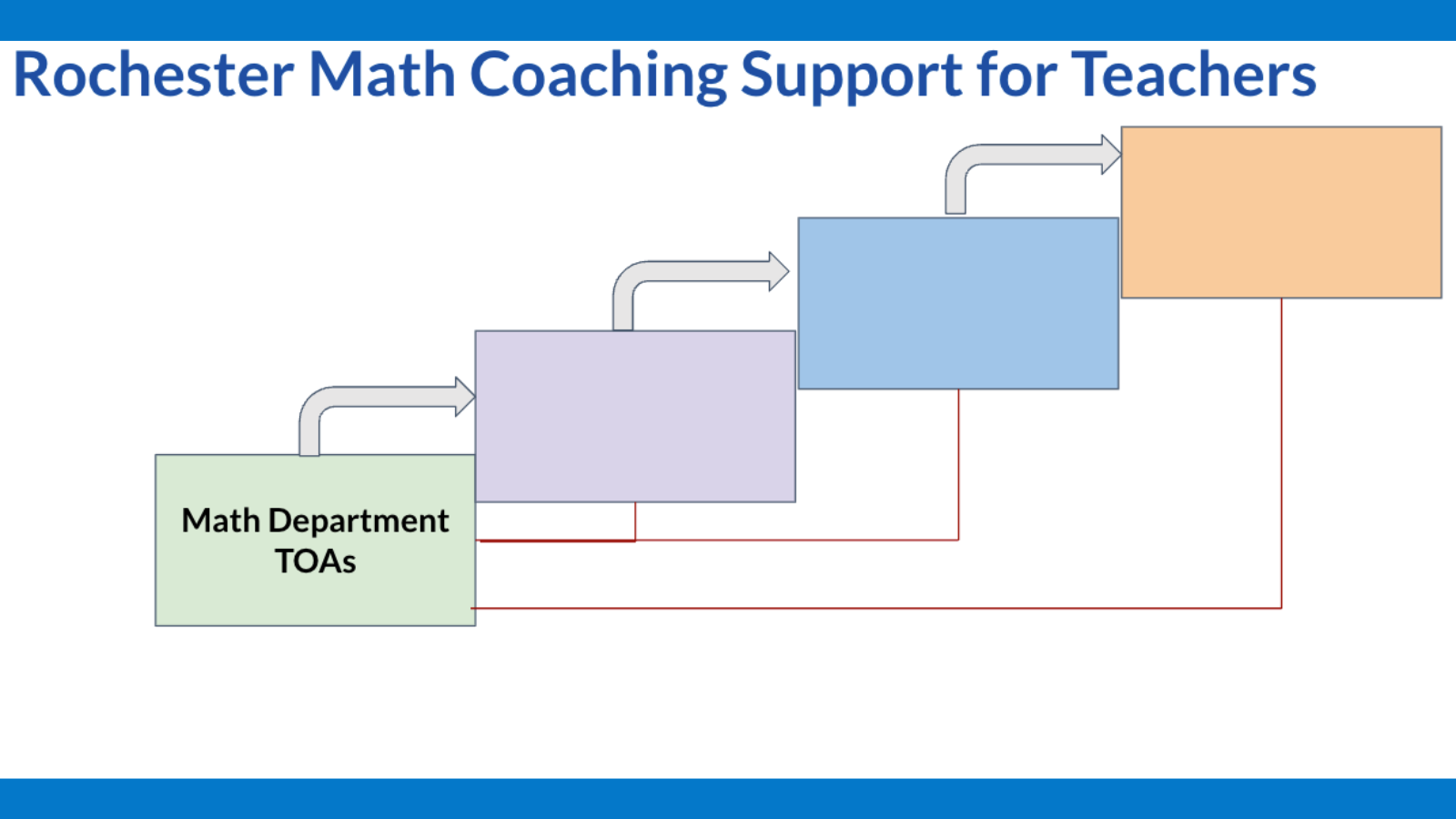
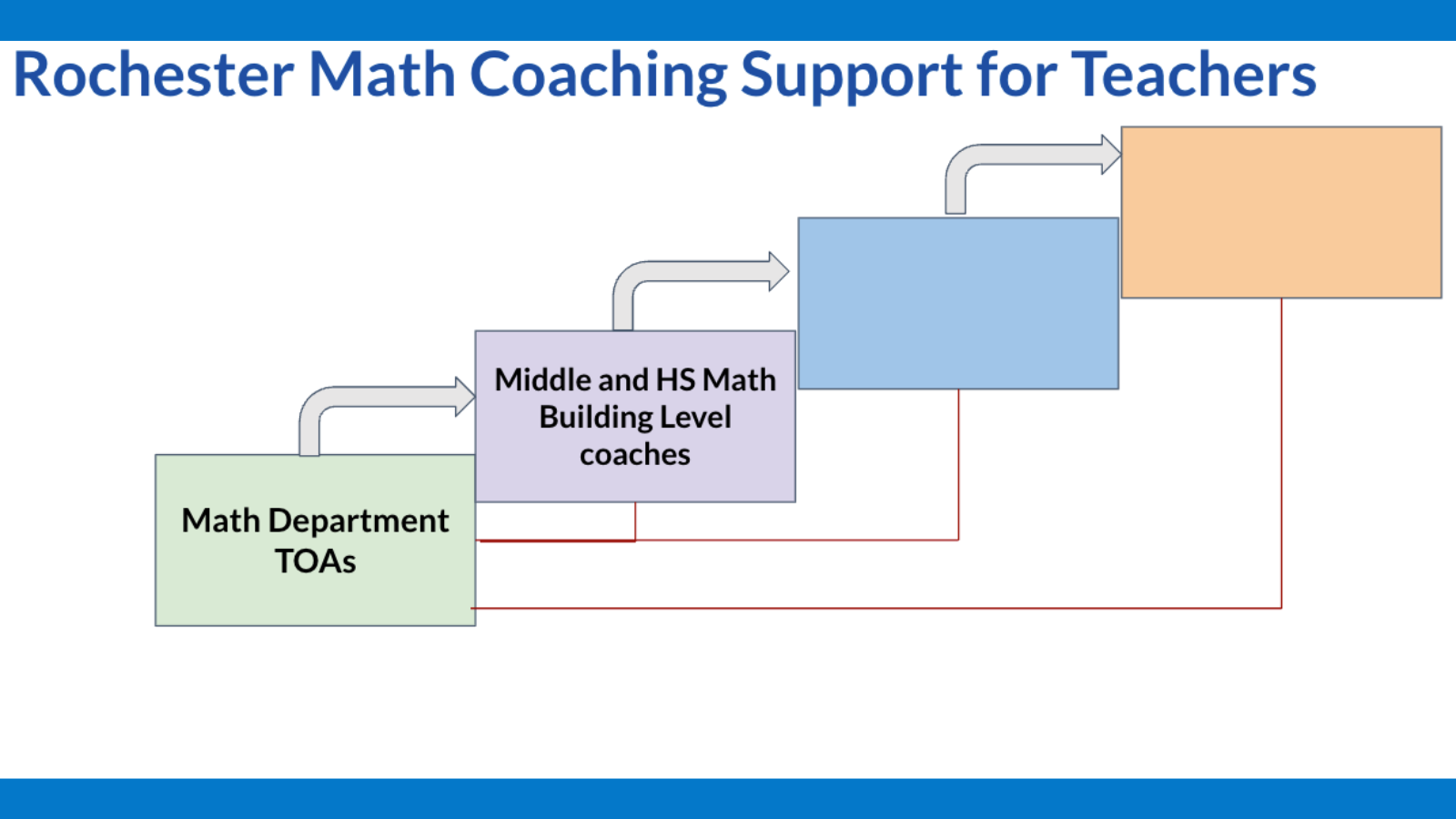
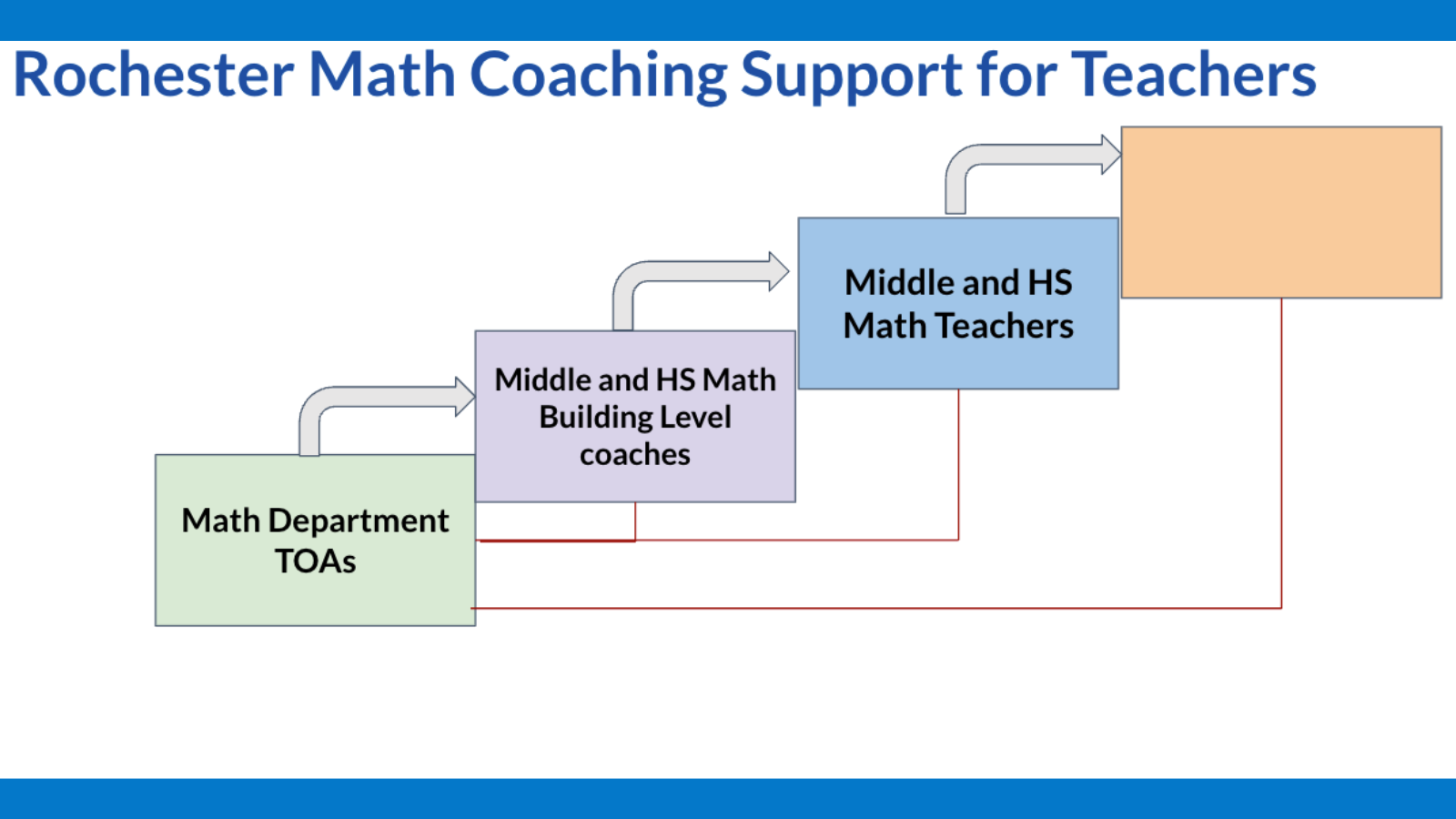
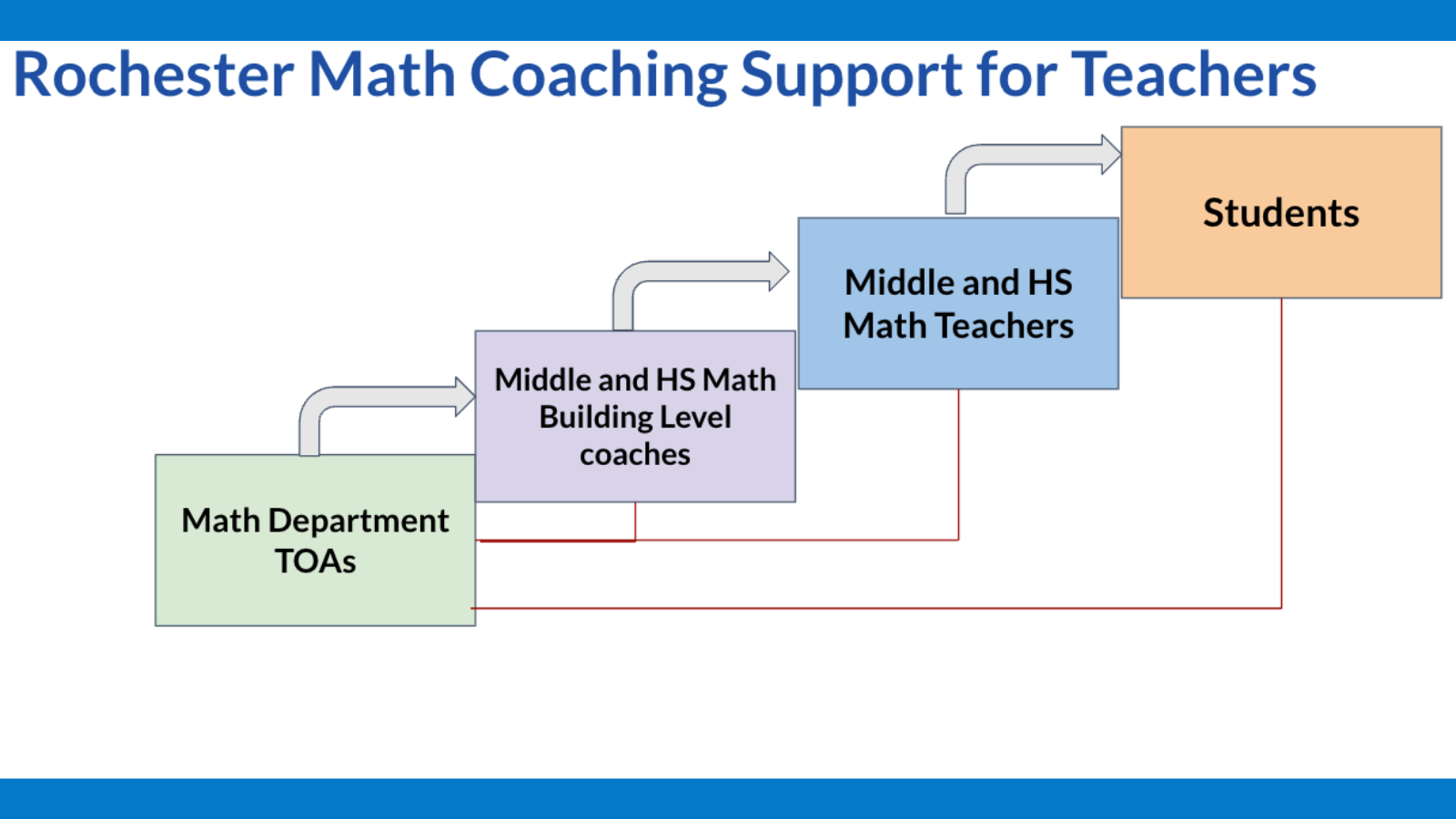
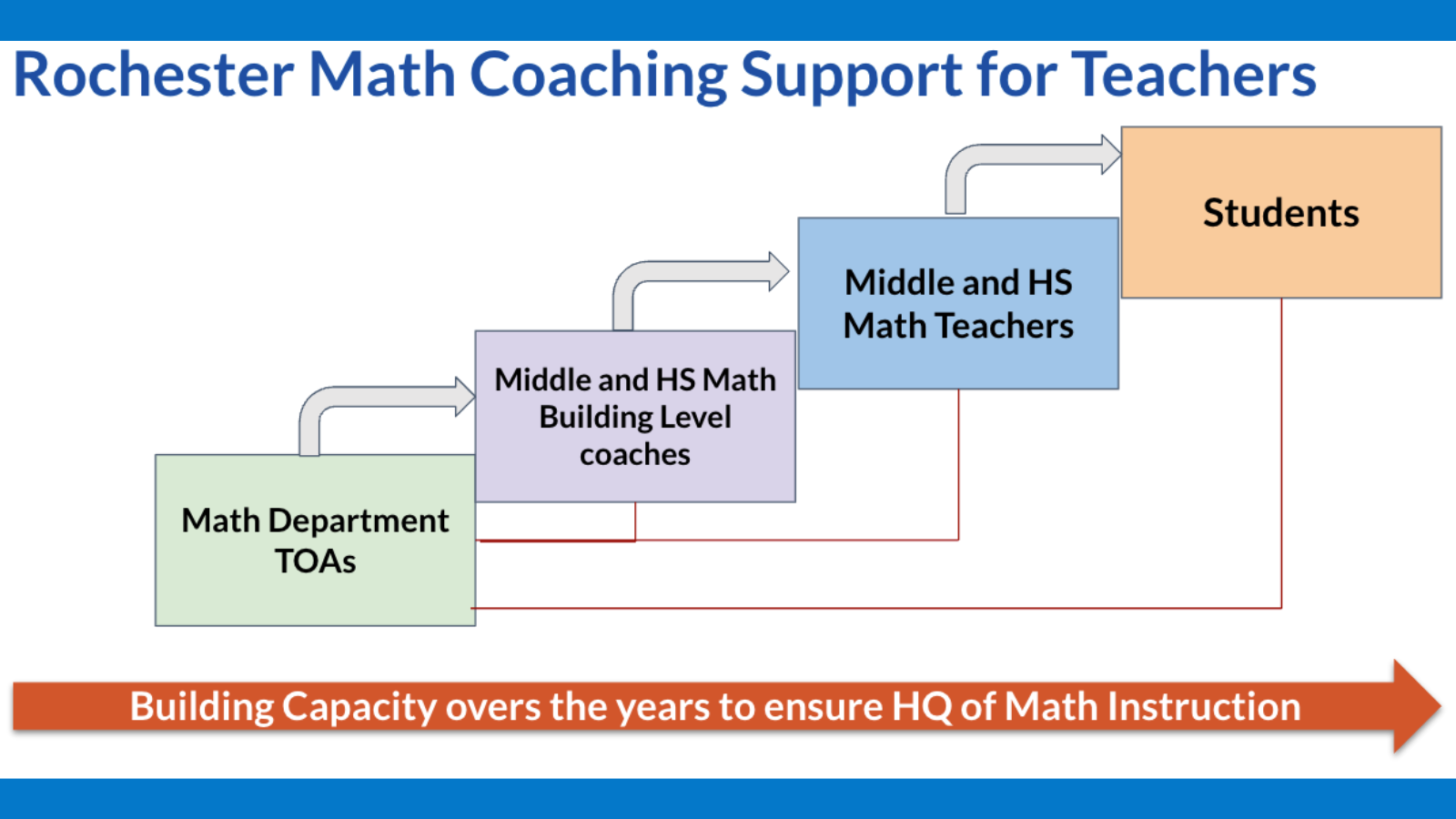
Job-Embedded Support
Instructional rounds became a cornerstone of RCSD’s implementation strategy. These non-evaluative visits provided real-time data on curriculum use and instructional practices. The RCSD math team also utilized lesson internalization sessions in which teachers and coaches engaged in structured planning sessions to deeply understand lesson intent and anticipate student thinking. They also consistently used a walkthrough tool to document implementation fidelity and instructional quality, help norm expectations, and identify areas for growth, such as increasing student discourse and conceptual understanding.
This job-embedded support, which also includes co-planning, modeling, and feedback, proved more effective than traditional professional development.
“It wasn’t until we began providing job-embedded support directly to building coaches and teachers that we began to see impact. That’s when we saw shifts in mindset and practice.”
Making Headway
RCSD used data to guide and reflect on its progress. State assessment results showed significant growth in middle school math proficiency, particularly in grade 7, where scores nearly doubled from pre-pandemic levels. While Algebra I results revealed a slight decline following the introduction of a new assessment, deeper analysis showed gains in students’ written responses, indicating improved conceptual understanding.
As the Rochester team deepened its implementation efforts, it recognized that relying solely on student outcome data would not provide a complete picture of instructional progress or system-level change. To better understand the impact of their initiatives and guide decision-making, the team began incorporating additional data sources, including teacher surveys and classroom observations. These tools offered valuable insights into shifts in educator behavior and instructional practice, critical indicators of early implementation success.
The data revealed a notable trend: while many teachers initially leaned on supplemental resources, there was a steady and measurable increase in the use of the Illustrative Mathematics (IM) curriculum over time. This shift reflected growing confidence in the core materials and alignment with the district’s vision for high-quality math instruction. By broadening their data lens, the Rochester team was able to monitor implementation fidelity, identify areas needing support, and make informed adjustments that strengthened their professional learning system and sustained momentum across schools.



Challenges Along the Way
|
|
Change is Emotional |
Despite the progress made, the journey was not without its challenges. The Math TOAs/district coaches often said, “Changing teacher practice is difficult—it takes an emotional toll on all of us.” Despite the progress made, the journey was not without its challenges. School coaches—many of whom were new to their roles—faced resistance from peers and struggled with confidence. They needed support in engaging in courageous conversations with teachers while maintaining fidelity to implementation. The district coaches focused primarily on supporting building coaches in facilitating PLCs and establishing demonstration classrooms for Algebra 1 in each high school. Leveraging their strong relationships, the district coaches were able to intensify support in the buildings by modeling lessons and creating safe spaces for feedback and reflection. |
|
|
Lack of Capacity and Models for Sustainability |
The district had limited capacity to support its largest curriculum rollout since Engageny Math, impacting over 6,000 students in grades 6–12 and 200 educators. With only two central office staff supporting dozens of schools, RCSD developed a scalable model that relied on building-level leadership and peer coaching. “We had to be creative,” said Wilson Burgos, RCSD Secondary Math Teacher on Assignment. “With only two of us at the central office, we needed to build a cascade of support—coaching the coaches so they could coach their teachers.” This required careful planning, clear communication, and a shared commitment to the work. |
|
|
Leadership Turnover |
Perhaps one of the most significant challenges was leadership turnover. RCSD experienced several superintendent transitions during the course of implementation. Each change brought shifts in priorities, requiring the math team to reestablish momentum and re-anchor the work in the district’s long-term vision. “We’ve had to be agile,” said Dr. Paco. “But our commitment to students has never wavered.” |
Scaling K-5
Building on the lessons from secondary implementation, RCSD turned its attention to elementary grades. Recognizing that foundational math skills are critical for long-term success, the district launched a year-long, stakeholder-driven process to select a K–5 curriculum. Over 130 participants—including teachers, leaders, parents, and students—engaged in a rigorous review and pilot process.
In May 2025, the district adopted I-Ready Classroom Mathematics. The decision was based on alignment with RCSD’s instructional vision, robust support for differentiated instruction, and teacher familiarity with the platform. Professional learning for elementary educators focused on building content knowledge and instructional capacity. The district ensured that all staff, including special education, ESL, and paraprofessionals, received consistent training to create the conditions for better implementation of the new curriculum.
"We took all the knowledge and ideas and applied it to the K–5 adoption. This wasn’t just about curriculum—it was about building teacher capacity and creating coherence across all grades.”
The implementation plan includes a phased rollout, with 15 schools beginning in Fall 2025 and district-wide rollout in Fall 2026.
Looking Ahead
Throughout its journey, RCSD has remained committed to equity, transparency, and continuous improvement. The district’s leadership has embraced implementation science as a framework for sustainable change, anchoring its work in data, research, and community voice.
As the district continues to scale its efforts, the focus remains on building systems that support every learner. With a clear vision, strategic alignment, and a culture of collaboration, Rochester is charting a path toward lasting impact in mathematics education.
“We are fully committed to supporting all of our students. Whether they’re in pre-K or high school, we support the vision of who they want to become as learners of mathematics.”



Lessons Learned
During the journey, the RCSD math team has used their new implementation knowledge to outline key lessons learned:
Coaching is the Catalyst
Professional development outside of the classroom had little impact on changing mindsets and practices. Sustained, embedded coaching—not just training—is essential for changing teacher practice. Job-embedded support directly to building coaches and teachers made a significant impact on teacher confidence, mindset, and practice.
Structural Thinking is Non-Negotiable
Success required aligning efforts across all stakeholders—students, families, teachers, and administrators. This systematic approach allowed the district to align efforts and ensure that everyone had the tools and knowledge to support student learning.
Data is the Compass
From student assessments to teacher surveys and classroom walkthroughs, data informed every decision. It helps us celebrate wins and identify where to grow.
Sustainability Requires Intentional Design
The district prioritized succession planning and capacity building to ensure that progress would not be lost with staff turnover. Well-thought-out succession planning ensures continuity.
Community Engagement is Powerful
Implementation is a shared journey with all stakeholders. Parents and community members were engaged throughout the process, from curriculum selection to implementation planning. Their voices helped ensure that the chosen materials met the needs of Rochester’s diverse student population.
Rochester’s Implementation Journey
Authors:
Dr. Enkela Paco, Rochester City School District
Liz Helbig, Rochester City School District
Wilson Burgos, Rochester City School District
Candace Colon, Rochester City School District
Nicolle L. Haynes, Rochester City School District
Yolanda Perkins, National Implementation Research Network
Stephen McKinney, National Implementation Research Network
